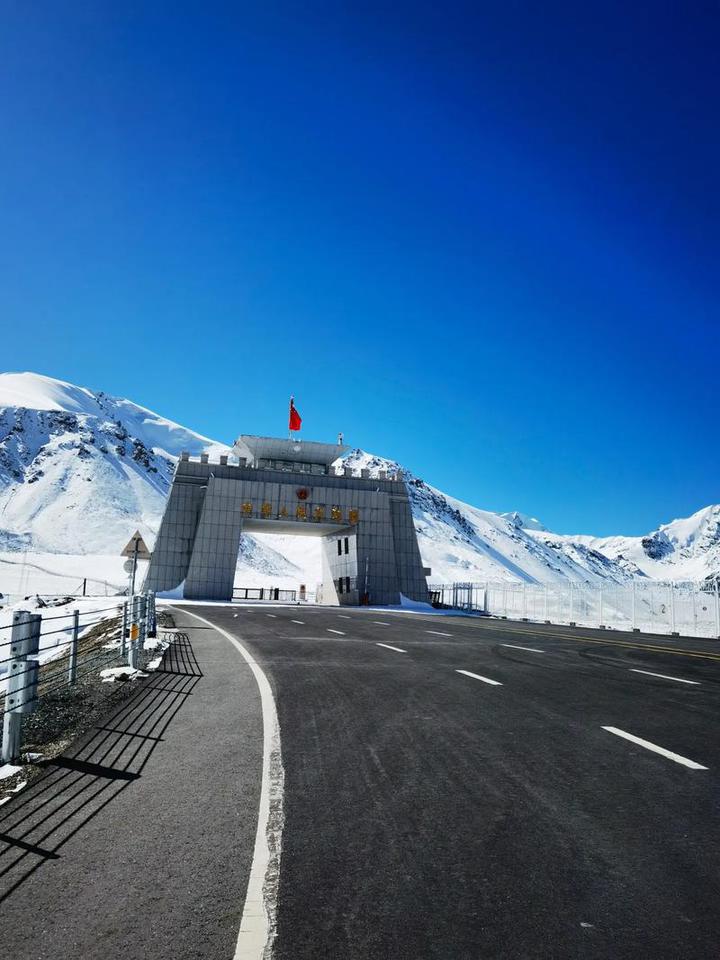Author: Prof. Engr. Zamir Ahmed Awan, Founding Chair GSRRA, Sinologist, Diplomat, Editor, Analyst, Consultant to Global South Economic and Trade Cooperation Research Center, and Non-Resident Fellow of CCG. (E-mail: awanzamir@yahoo.com).
Nestled amidst the rugged peaks of the Karakoram Range, the Khunjerab Pass, at an elevation of approximately 5,000 meters above sea level, serves as the world’s highest paved border crossing and a vital trade artery between China and Pakistan. For decades, the pass was a seasonal lifeline, open only from April to November due to severe winter weather and heavy snowfall. However, a historic shift has occurred: the pass now operates year-round, signaling a transformative chapter in China-Pakistan trade and regional development.
This pivotal development stems from a joint decision announced during the third Belt and Road Forum for International Cooperation in 2023. Located in the Taxkorgan Tajik Autonomous County of Kashgar, Xinjiang, Khunjerab Pass is not just a border crossing but a strategic cornerstone of the China-Pakistan Economic Corridor (CPEC). The move to make it a full-year port is a testament to the deepening ties between the two nations and their shared vision for economic growth and cultural exchange.
Rising Trade and Economic Impact
The trade through Khunjerab Pass has witnessed a remarkable surge. From April to October 2024, the port recorded more than 11,000 inbound and outbound vehicles and processed 40,900 tons of goods, reflecting a year-on-year increase of 42.6% in traffic and 72.7% in cargo volume. Between 2016 and 2020, the total trade volume exceeded 200,000 tons, and this trajectory is set to climb further with the extended operational timeline.
China imports textiles, agricultural products, and daily commodities from Pakistan while exporting plants and medicinal herbs. These exchanges have bolstered bilateral trade, which not only supports national economies but also breathes life into remote, historically underdeveloped regions.
Transforming Border Regions
Border regions, often plagued by poverty and isolation, are experiencing a renaissance due to the trade facilitated by Khunjerab Pass. Villages on both sides of the border have seen improved infrastructure, job creation, and increased income levels. Roads, markets, and small businesses have emerged, catalyzing local economic activity and improving the quality of life.
In Pakistan’s Gilgit-Baltistan and China’s Xinjiang, the pass has reduced poverty and fostered cultural interactions. The communities, historically reliant on subsistence agriculture and limited trade, now have opportunities to connect with larger markets, enhancing economic resilience.
Regional and Global Significance
Strategically, the Khunjerab Pass is more than a bilateral asset. It is a gateway to South Asia and Europe, offering China and Pakistan an edge in regional trade dynamics. As a crucial node in the Belt and Road Initiative (BRI), the pass supports the vision of seamless connectivity, fostering economic integration across continents.
Road Trade: A Green and Efficient Alternative
Compared to air or sea routes, road trade via Khunjerab is cost-effective and environmentally sustainable. It minimizes shipping times and provides flexibility in transporting goods, making it an indispensable link in supply chains. The full-year operation will ensure uninterrupted trade, mitigating seasonal disruptions that previously hindered economic flows.
Looking Ahead
The full-year operation of Khunjerab Pass heralds immense potential. It paves the way for increased bilateral trade, sustainable development of border areas, and deeper cultural ties. With advancements in infrastructure and digital trade facilitation, the pass could further streamline logistics, attracting more investment and fostering innovation.
Moreover, enhanced cooperation between China and Pakistan through Khunjerab Pass sets a precedent for regional stability and prosperity. By integrating border economies into national frameworks, both nations exemplify how connectivity can address long-standing socio-economic challenges.
Summary
The Khunjerab Pass is far more than a geographical marvel; it stands as a testament to the enduring spirit of collaboration and the transformative power of shared vision. Perched at an awe-inspiring altitude of 5,000 meters above sea level, it symbolizes the deep-rooted partnership between China and Pakistan, built on trust, mutual respect, and a common aspiration for prosperity.
As the highest paved border crossing in the world, the Khunjerab Pass is not just a lifeline for trade but a beacon of economic integration and cultural exchange. By unlocking its full potential through year-round operations, both nations reaffirm their unwavering commitment to fostering inclusive growth, bridging divides, and paving the way for sustainable development.
The impact of this iconic gateway reverberates far beyond the immediate trade corridors. It is transforming the lives of communities in some of the most remote and historically underserved regions. With improved infrastructure, greater access to markets, and new economic opportunities, the pass is a catalyst for poverty alleviation, better livelihoods, and enhanced regional stability.
As trade volumes surge and cross-border connectivity deepens, the Khunjerab Pass serves as a cornerstone for regional cooperation and global outreach. It strengthens the bonds of friendship between two brotherly nations while illuminating the path toward a future where shared prosperity transcends borders. In this spirit, the Khunjerab Pass is not only a bridge between two nations but also a harbinger of hope for the wider region, driving progress, harmony, and a unified vision of success.
(ASIA PACIFIC DAILY)
